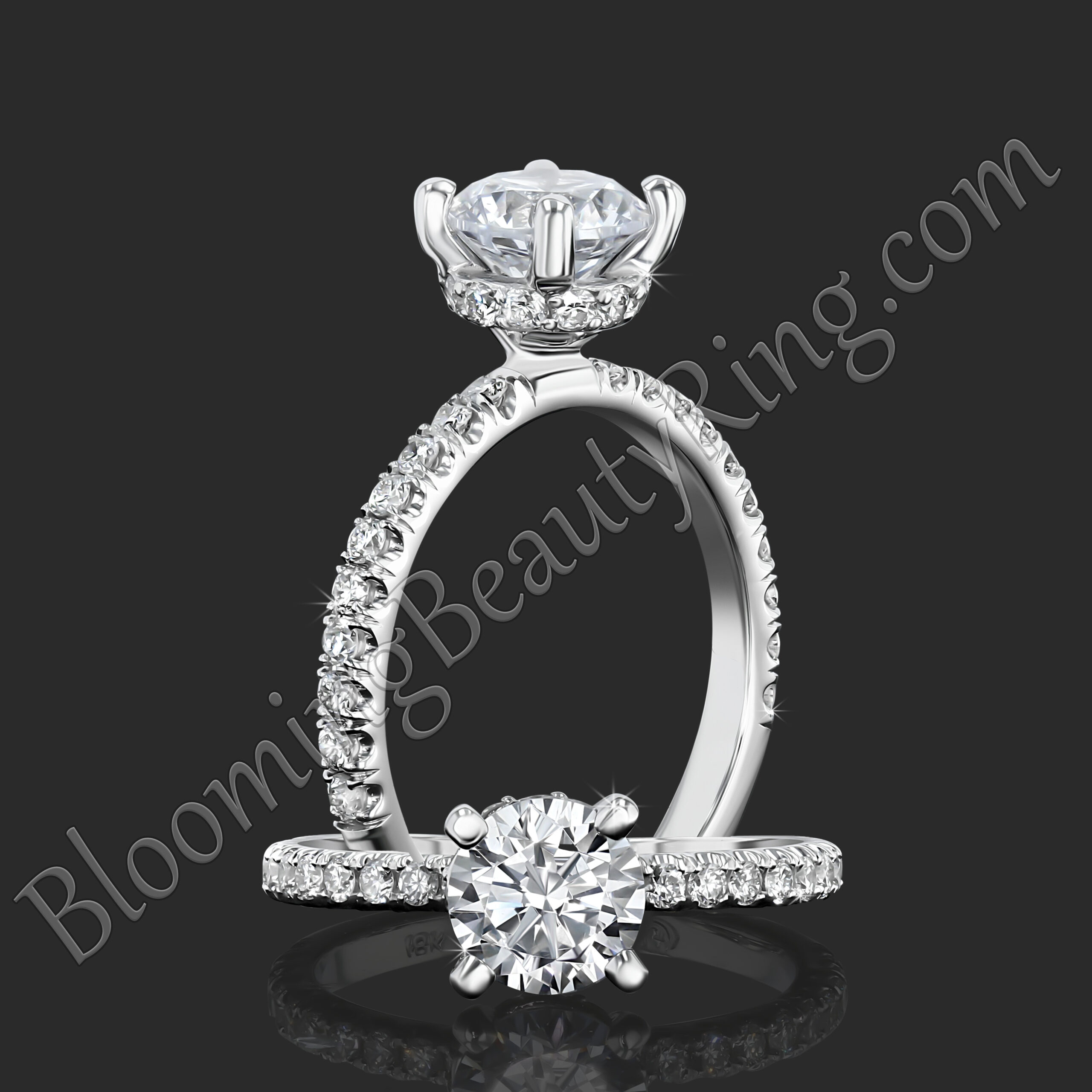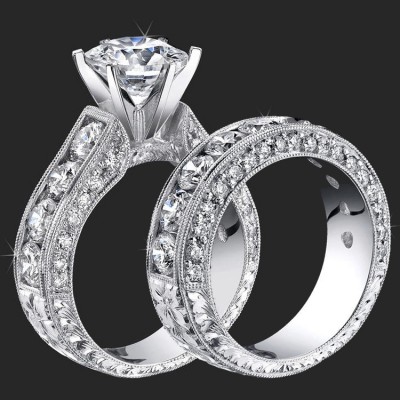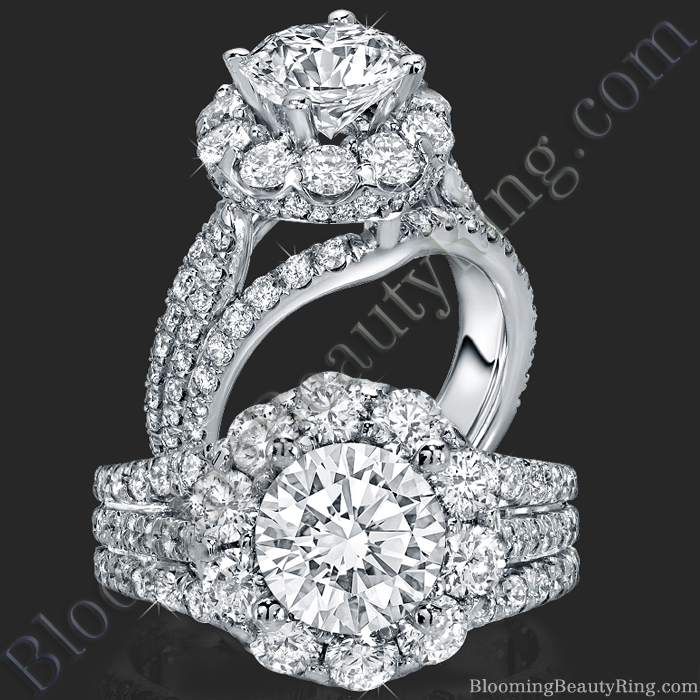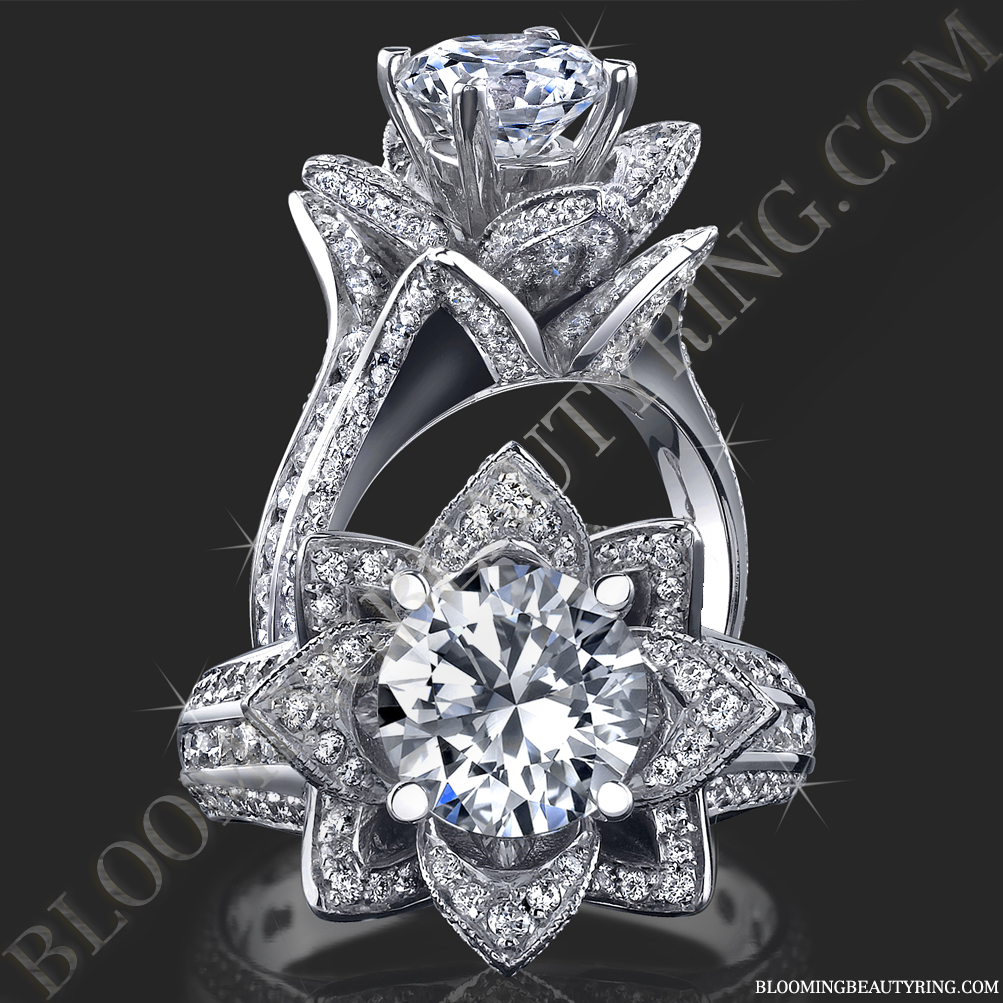~ Clarity Grade Explained ~
A diamond’s clarity grade is determined by the number, size, and location of imperfections which are referred to as “inclusions” in the diamond trade.
Clarity is probably one of the more complicated factors to figure out since since it is calculated using many factors, rather than a physical measurement like carat weight is, or the depth and table percentages are. You could even say that clarity grade is “open to interpretation”, or someone’s opinion. In other words, if 2 gemologists graded the same diamond, they could grade the diamond slightly differently. For Example: One gemologist may believe the diamond is a VS2, while the other may believe that it is SI1.
Sometimes a diamond may not fit perfectly in to one clarity grade or the other. Even within a clarity grade itself, there can be diamonds that are on the “low end”, and diamonds that are on the “high end” of the clarity grade. For this reason, you may hear someone say that it is a “strong VS1”, or a “weak VS1”. This applies to all clarity grades with the exception of flawless. In other words, the diamond’s clarity grade could be borderline between 2 grades.
How a Diamond is Graded
When grading a diamond’s clarity grade, a gemologist has to look at the diamond under 10x magnification, and study the total number of inclusions, as well as what type of inclusions the diamond has, and the size of the inclusions. Although there are established guidelines that the gemologist will use to determine the clarity, personal judgement is still used to make the final determination. Which is what makes determining the clarity of diamonds not an exact science like determining the color, cut, carat weight of the diamond. However with that being said. There are still standards that must be adhered to. Such as there no way an I1 can be seen as a VS1.
Type Example: If a diamond has a black inclusion versus a white inclusion, the black inclusion is less desirable and may have a greater negative impact on the clarity grade. This is particularly true if the inclusion is large enough to be seen by the naked eye. It can also be the case if it is in a very visible location, such as the middle of the table, as opposed to being on the side of the diamond by the girdle. (An inclusion that is off to the side can sometimes be covered by a prong so that it is no longer visible)
Size Example: If a diamond has many very small inclusions, some black and some white, it is called a “Salt and Pepper Diamond”. However even though the diamond may have dozens of inclusions, they can easily be so small that the naked eye can not see them. This may be considered a higher clarity grade diamond than one with a single, very large inclusion that is visible to the naked eye. Especially if it is on the top (table) of the diamond.
Location Example: If you are buying a lower clarity grade diamond like I1, I2, SI2, and SI3, chances are pretty good that the diamond will have visible inclusion(s) that can be seen with the naked eye. As mentioned earlier, the location of the inclusion(s) can effect the beauty of the diamond, and possibly it’s clarity grade. The least desirable location to have an inclusion is on the top of the diamond, especially on the table. The table is the largest facet on the diamond and will be the easiest location to spot an inclusion, and it will never be possible to cover that inclusion with a ring’s prong. However an inclusion that is far off to the side, perhaps by the girdle, will not be nearly as visible and has a pretty good chance at being covered by a prong of the ring or earring.
See and Learn Clarity Grading
Notice you can see the black and white inclusions under 10x magnification. However you can’t see the white inclusions using your naked eye, but you can see the black. This makes the diamond at the very most a SI2 diamond, as a true SI1 diamond you should not be able to see anything with the naked eye. If the black inclusion was not there this diamond could easily be a VS2 – VS1 diamond.
However move that black carbon spot to the very edge of the diamond where it can barely be seen and can be covered up by a prong and now the diamond is at least a SI1 diamond.

Remove the black carbon spot and a few of the white spots and move the white spots to the edge and now you have a VVS2-VVS1 diamond. Of course, if you remove them all you'll have a IF (internally flawless) diamond.
Inclusion are blemishes and / or imperfections in ,or on a diamond. Such as:
- Black carbon spots
- Cracks
- White spots
- Feathers
- Chips
- Clouds
- etc…
See the diamond inclusion chart below to see what each looks like.
Flawless and VVS diamonds are very expensive, and quite frankly unnecessary.
Without question, the number one concern for most diamond shoppers is to buy a diamond that is “eye clean” SI1 or above will do just that.
Eye Clean means the diamond should be visually flawless to the naked eye.
Grading laboratories will grade diamonds differently. The labs with the most strict grading standards are GIA and AGS, while EGL-USA is a close runner up.
This is also why diamonds certified by those labs will tend to be more expensive than a non-certified diamond, an EGL-Israel diamond, or any other international EGL laboratory.
Please read GIA versus EGL.
Diamond Inclusion Chart
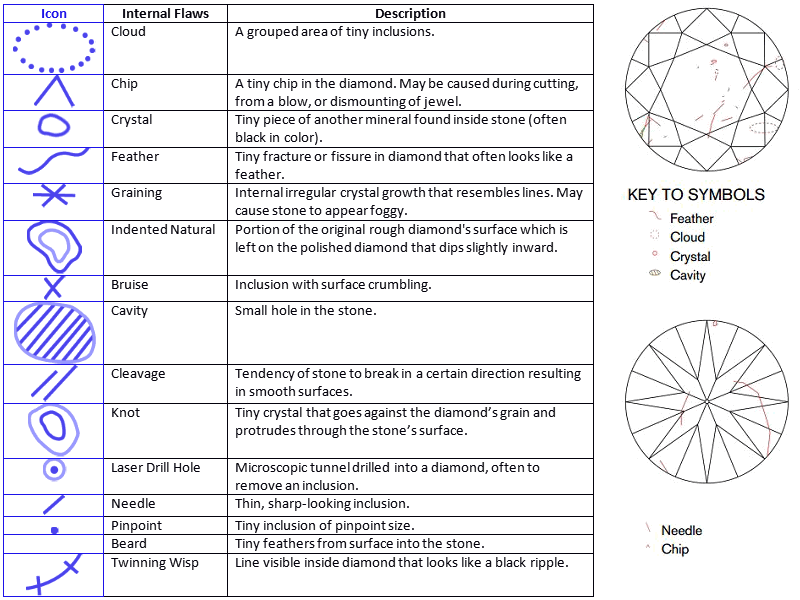
More rare and more desirable
It is so rare to find a diamond without a single inclusion at the 10x magnification level that it can turn a $4000 1ct diamond into a $25K – $30K diamond. However don’t be fooled. Nothing is perfect. If diamonds were graded at the 20x – 30x magnification level you would be hard pressed to find a IF or Flawless diamond … ever.Learn more: Internally Flawless versus Flawless
Standard Clarity Grades
Below you’ll see the standard diamond grading chart outlined by GIA. However you’ll find out that many of the diamonds you see online are not graded by GIA, and to the disappointment of many people, once they get their diamond, they realize that not all diamond grading labs grade at the same high standard of GIA. Take a look here Advanced Diamond Clarity Chart to see the “modifications” in your search you’ll have to make if you plan on buying a diamond graded by any other grading lab outside of GIA or AGS.
 |
|
 |
|
 |
|
 |
|
 |
|
 |
|
 |
|
 |
|
 |
|
 |
|
Is Clarity Grade Important?
In strict terms of appearance, clarity becomes less important if the diamond is “eye clean”. Eye clean means that the human eye can not see a single inclusion in a diamond without the aid of magnification. Although you may be able to see the inclusions of a VVS or VS diamond under 10x magnification, most people are not concerned with that since they don’t plan on carrying around a diamond grading loupe or microscope. However you can always see the other characteristics of a diamond, such as it’s color grade, carat weight and cut grade. If you would like to save yourself some money and just buy “eye clean” May we recommend the following.
- GIA Grade - SI1
- AGS Grade - 5
- EGL USA Grade - VS2
- VS2/VS1 when graded by any other lab.
If you are buying a diamond online and the diamond is graded “in-house” or graded by “other” it’s best to have the store pull the diamond out for you and personally inspect the diamond to make sure it’s eye clean. This can not be stressed enough.


